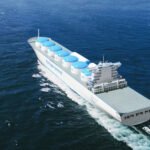The US climate goal of achieving net-zero greenhouse gas emissions from the aviation industry by 2050 will be supported by NASA’s development of all-electric aviation, which will not only open the way for electric aviation. By the end of September, NASA’s X-57 Maxwell all-electric project will have finished operating the aircraft, with documentation and close-out tasks continuing for a while after.
Aviation researchers may learn hundreds of lessons from the X-57 study, which also yields ground-breaking advancements in a variety of fields, including battery technology and cruise motor control design. An Italian Tecman P2006T that had been modified to use an electric motor system became the basis for the creation of the aircraft. They led the development of electric propulsion, and NASA’s Armstrong Flight Research Centre director, Brad Flick, expressed his extreme pride in their persistence and inventiveness. Their contributions make the possibility of electrified propulsion in the future viable. The first flight of the X-57 aircraft will not be included in the completion of aircraft operations by September 2023, according to the US space agency.

NASA-added technologies and design methodologies rather than a prototype
The project ran into a number of difficulties with safe flight, including mechanical problems late in its lifecycle and a shortage of essential components needed to construct experimental gear. The team would not have enough time to achieve safe flight conditions given the impending planning end of aircraft operations. Although the majority of the X-57’s development will be over by September 2023, the team will formally wrap up its work with further technician publications several months later.
According to NASA, the X-57 project’s main objective was to inform regulators about the design of the aircraft with an emphasis on electric propulsion and the airworthiness process. The goal was to provide a testing platform for NASA-added technologies and design methodologies rather than a prototype.

The X-57 crew realised early on that considerable advancements in battery technology would be necessary
They accomplished feats that had never been done before, and Flick noted that this is never simple. The X-57 crew realised early on that considerable advancements in battery technology would be necessary. As they release energy, the aircraft’s lithium-ion batteries warm up, and too much warming could cause them to overheat.
To solve this problem, the project collaborated with the North Logan Electric Power System in Utah. Engineers showed that the new battery system design will operate the aircraft safely and within acceptable limitations. Another accomplishment of the X-57 project is the creation of cruise motor controllers. These controllers use the aircraft’s lithium-ion batteries’ stored energy to power the motors that turn the propellers. In addition to its Electrified Powertrain Flight Demonstration project, NASA stated that it will carry out further research into electric aircraft.



















